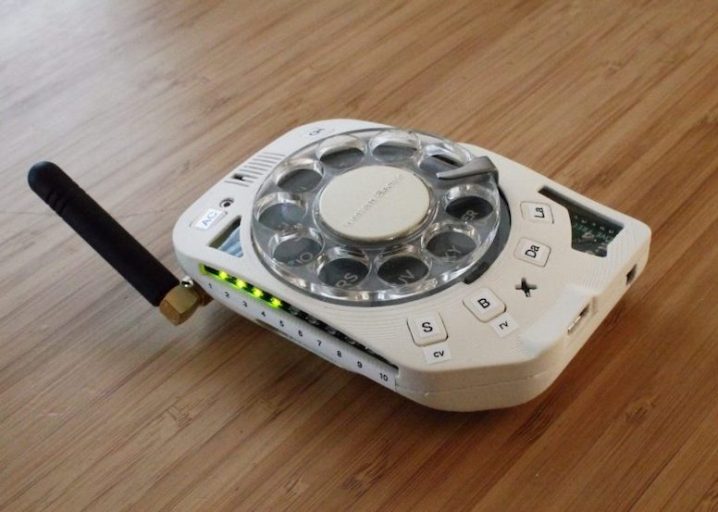Looking like the kind of contraption that a 1950s engineer might have come up with if asked to create a “futuristic phone that you can carry around,” this seemingly early attempt at a cell phone is, in fact, a recently designed device that actually works. And you can buy it, too.
The rotary cell phone is the work of Justine Haupt, an engineer at Brookhaven National Laboratory in New York. Haupt documented the development of the device on her website, describing it as a “quick and dirty project.”
But this week the engineer revealed there’s been so much interest in the device that she’s decided to make it available in kit form for $240.

Haupt’s rotary cell phone features … well, not very much. But for some that will be its appeal.
Some of the physical buttons on the device, for example, can be set up to link to frequently called numbers, eliminating the need for a touchscreen and menu. Just to be clear, the dialer does work, and can be used for other numbers that you don’t save.
Incorporating some slightly more modern technology, on the back you’ll find a curved e-paper display — a late addition to the design but now Haupt’s favorite feature — that shows missed calls and other relevant messages.
The 10 green lights down the side of the phone indicate the battery level, and the device can be powered on and off using a slide switch. “No holding down a stupid button to make it turn off and not being sure it really is turning off,” Haupt said in her online notes.
While there are a few parts that buyers will have to supply themselves — including the all-important rotary dial — the mainboard, as well as the 3D-printed casing with threaded inserts and buttons, is all part of the package (below).

With tech firms like Samsung and Motorola continuing to push the boundaries of mobile technology with the recent launch of folding smartphones, Haupt’s design is a nod to a bygone era where you had to stick your finger in a hole, turn the dial, and release (for each number) in order to make a phone call.
Haupt said that part of the reason she wanted to take on the challenge of building a rotary cell phone was because “in a finicky, annoying, touchscreen world of hyperconnected people using phones they have no control over or understanding of, I wanted something that would be entirely mine, personal, and absolutely tactile, while also giving me an excuse for not texting.”
She said she also wanted to demonstrate that “it’s possible to have a perfectly usable phone that goes as far from having a touchscreen as I can imagine.”
It should certainly be a conversation starter if you (manage to) pull it out of your pocket at a party. A conversation that may begin with: “Is that the budget iPhone we’ve been hearing about?” or “Have you just time-traveled from the mid-20th century?”
Editors' Recommendations
- Why you should buy the iPhone 15 Pro instead of the iPhone 15 Pro Max
- 5 phones you should buy instead of the Google Pixel 8
- Can you take a picture of the solar eclipse with your phone? Here’s how to do it
- 5 phones you should buy instead of the iPhone 15 Pro Max
- Your iPhone just got a new iOS update, and you should download it right now


